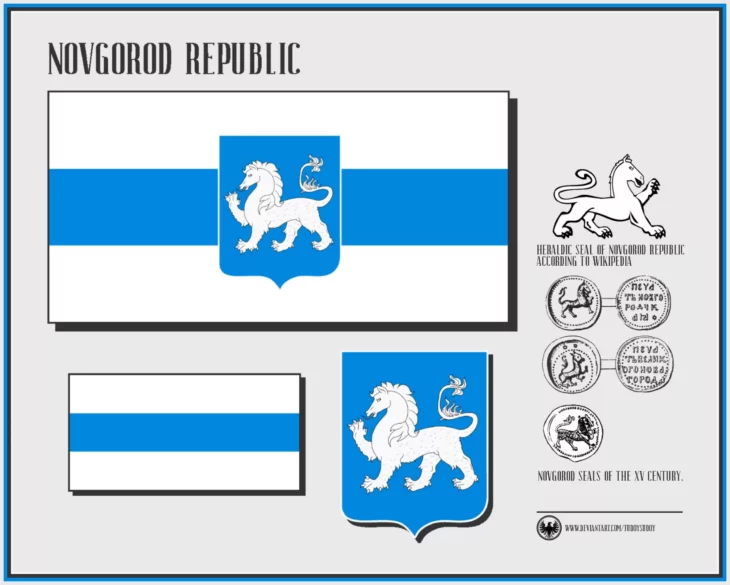
Politics of memory, as an attempt to establish particular interpretations of historical events as dominating in the eyes of society, has long been used by the regime of Vladimir Putin, a man who wants to be seen as his country’s “chief historian”, as well as the “follower in the footsteps of Peter the Great” when it comes to “reclaiming the lost lands”1. It should be said that history in our country has always had the role of “politics projected into the past”2, except for a very short period of relative pluralism of the 1990s. The peak of using history as a tool is an amendment to the Constitution of Russia from the 4 July 2020, part of the revisited version of Article 67.1 Clause 2: “The Russian Federation united by thousand-year history, holding in remembrance the ancestors who transferred us ideals and faith in God, and also succession in development of the Russian state recognizes historically developed state unity.” Thus, paradoxically, if we accept the tautological statement made in this Article from the revised Russian Constitution, the only event that shaped Russia as it is today is history itself, since it was the “thousand-year history” that led to “state unity” which, in turn, is also “historically developed”. The government of Russia receives its carte blanche to do anything it wants from history itself – or, at least, that’s how it wants things to look. To achieve this, it uses the quasi-historical idiomatic concept of “historical Russia”.
According to Putin’s regime, the concept of “historical Russia” includes both the Russian Empire and the Soviet Union; however, all the events that don’t fit in with the “state-oriented” narrative are carefully “purged” from the official version of history: in Putin’s version, Peter the Great is valuable not for his radical reforms, but for “reclaiming the lands”, as said before; among the rulers of the 19th century, preference is given not to Alexander II, whose years in power included emancipation of Russian serfs and extremely important reforms, including that of local government (much loathed by today’s Russian establishment), but to Nicholas I, whose rule was marked by confrontation with the outside world that symbolically ended with the Crimean War, in which Russia suffered a decisive defeat; as for the Soviet time, Lenin is seen not as a radical revolutionary who conducted a coup and called for national self-determination for the peoples of the “one and indivisible” Russia, but rather as a gatherer of lands of the “historical Russia”; however, the preference among the Soviet leaders is rather given to Stalin, under whom the state’s power and violence reached the scale unseen in the entire earlier history of the country.
By interpreting history like this, the regime fulfills several goals at once. Firstly, the historical process is postulated as a homogeneous and continuous fabric, fully devoid of any discontinuities: revolutions or crises of statehood. Therefore, the current regime appears as the “natural” successor of Russia’s entire historical path and its culmination. The second aspect is that the “historical Russia” is not a nation-state; it is an empire. As stated in articles authored by Putin himself, Russia is a “polyethnic civilization bonded by the Russian cultural core”, while any “attempts to promote the idea of building a Russian “national”, monoethnic state contradict our entire thousand years history”. Finally, third, all the independent post-Soviet countries that now surround Russia are, according to the authors of this concept, merely shards of Russia itself, temporary and accidental entities that have no historical basis. Notably, this approach is now actively used to justify the military aggression against Ukraine, a country that the author (authors?) of Putin’s article referred to as “fully and utterly a product of the Soviet era” and Ukrainians who exist “as part of the big Russian nation that unites Great Russians, Little Russians, and White Russians”3.
The fact that history is used as a tool for the government and to ideological ends (for “historical legitimization” of the regime’s policies) naturally raises the following question. Can the opponents of the current political regime also use history to achieve their goals by finding in it some narratives that can be alternative to the authoritarian vector of the country’s development? We already have an example of an affirmative answer to this question: use of the white-blue-white flag by political groups of Russian citizens abroad after 24 February 2022, which clearly references the “Novgorod Republic narrative”4. Despite the fact that the white-blue-white flag is not associated with centuries of history (it was first used as a flag of Novgorod on 14 April 1994), referencing Novgorod as a political center alternative to Moscow is significant and has a key meaning in the eyes of those who accept this flag as a symbol of their political and, specifically, anti-war position.
Not only politically active Russian emigrants, but also European politicians agree with referencing the “Novgorod narrative” by using the “blue-white-blue flag”. Andrius Kubilius, Member of the European Parliament and former Prime Minister of Lithuania who participated in the First Convent of Russian Civil Society Organizations in Prague on 3 July, said the following: “White-blue-white is democratic Russia’s new flag that now flutters at all the protests of free Russians — from the rally at London’s Westminster Square to demonstrations in support of Ukraine in Berlin. It’s symbolic that during the first congress three flags decorated the wall: Those of the Czech Republic, of the European Union, and the white-blue-white flag of the democratic Russia that references the Novgorod Republic.”
Same as with the “historical Russia” discourse, the “white-blue-white flag” is an example of using history as a political tool, except it’s done by the opposition rather than the government – successfully due to a number of reasons, as we will later see. The most obvious reason is that using a new symbol of national identity different from the official flag of Russia creates a distance and a watershed between Russian citizens who strongly disagree with actions of Putin’s regime, and the Russian state which is currently controlled by the said regime. The fact that the “Novgorod” flag was chosen as a symbolical foundation for that distance is especially important today, as Russia is waging war against Ukraine. Because this symbol embodies rejection of any infringements on Kievan Rus’, as well as on any territories of any sovereign states that once were part of the “historical Russia”, be it the Russian Empire or the Soviet Union. Besides, it’s also a clear tribute to the historical Novgorod Republic as an alternative to the Moscow imperial project in the Russian history. Basically, this new flag represents rejection of two fundamental negative traits of the Russian statehood: authoritarianism and military expansion.
It’s equally important that the people who use this symbol are united by their participation in horizontal and anti-authoritarian movements. The solidarity surrounding the white-blue-white flag is similar to a spontaneous political event, it’s not a result of party discipline, it did not come from the above. Its ambassadors point at how easy it is to make this flag, how it can be created in any conditions; this is the reason why there is still no single approved shade of blue. Here is the list of groups and associations that are currently using the white-blue-white flag: Free Russia Forum (Vilnius), Dekabristen (Berliin), Demokrati-JA (Berlin), Kulturus (Prague), Solidarius / Freies Russland (Berlin), Za wolną Rosję (Warsaw), as well as Russian anti-war committees in all the places of the world where there are politically active Russian groups. On 3 and 4 July, First Convent of Russian Civil Society Organizations in Europe took place in Prague; it included representatives of many aforementioned activist and political communities. They presented their projects and took part in discussions on possible alternatives to authoritarian tendencies in Russia’s political future.
The connection of the white-blue-white flag with the usage of the “Novgorod narrative” as a political tool is an important example of how the modern form of resisting an authoritarian regime (and military aggression by this regime) obtains a symbolic foundation in the country’s history instead of asserting itself against its history.
Translated by Nikolay Gorelov
____________________
- See e.g.: “Russian leader likens himself to Peter the Great and states reclaiming lost lands as his goal”. // https://www.bbc.com/russian/news-61749842.
- The expression by Mikhail Pokrovsky, a Soviet Marxist historian, first used in his speech Social Science in USSR in 10 Years, 22 March 1928.
- Articles by Vladimir Putin “Russia: the National Question” (23.01.2022) and «On Historical Unity of Russians and Ukrainians» (12.07.2021).
- The Novgorod Republic, or “His Majesty Lord Novgorod the Great”, is a medieval North Russian state with a republican form of government that existed from 1136 to 1478, destroyed during a military campaign by Ivan III, Grand Prince of Moscow.




